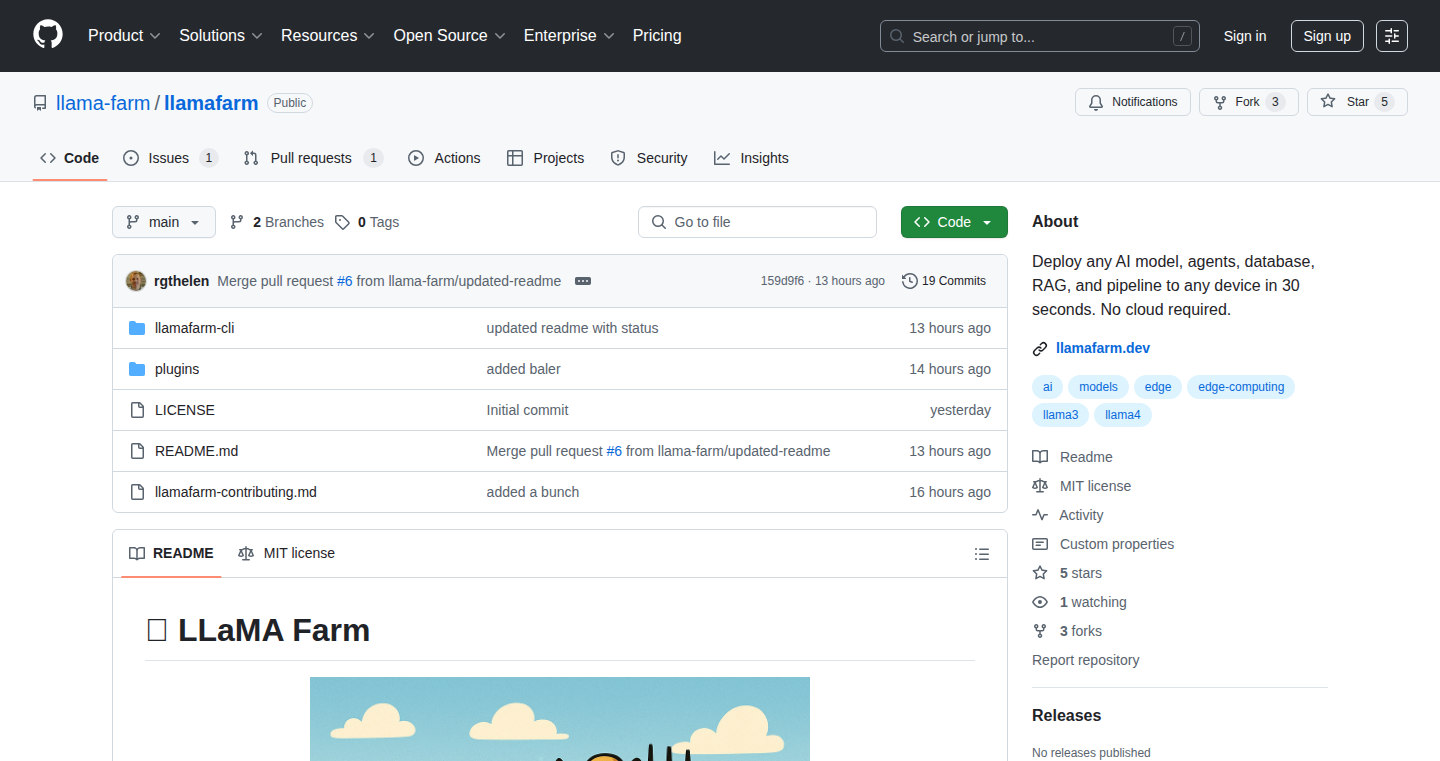

Highlight 1
The tool simplifies the typically complex process of setting up AI environments by packaging everything into a single executable, eliminating the need for manual setup of Python environments, CUDA drivers, and model downloads.
Highlight 2
The plugin architecture for platform and database support is a strong feature, allowing for easy extensibility and future-proofing as new platforms and features are developed.
Highlight 3
The focus on non-technical users, by allowing them to copy one file to deploy AI, makes this product highly accessible and user-friendly, especially for those who want to run local AI models without the steep learning curve.

Improvement 1
The product's current state is very much in development, with key features like model compilation and vector DB embedding still in placeholder status, which limits its current usability for actual deployments.
Improvement 2
The farm metaphor (plant, harvest, bale, etc.) might feel a bit overdone and could confuse users who are not familiar with farming terminology or AI deployment concepts.
Improvement 3
While the single binary approach is a great idea, the large file sizes (5-15GB) could be a barrier for users with limited storage or slow internet connections.
Product Functionality
To improve the functionality, focus on completing core features like model compilation and vector DB embedding to make the product more functional. Additionally, optimizing the binary size or offering users the ability to choose modular downloads might improve usability for those with limited storage.
UI & UX
The web UI could benefit from clearer explanations of the tool's concepts, such as the farm metaphor, to ensure non-technical users can navigate it easily. Simplifying the user interface and providing more intuitive visual cues will help users better understand the process of deploying AI models.
SEO or Marketing
To increase visibility, focus on content marketing by publishing guides, tutorials, and use-case examples that highlight the benefits of local AI deployment. SEO efforts should target keywords around local AI, edge AI, and avoiding cloud dependencies. Collaborating with influencers or AI communities could help spread awareness.
MultiLanguage Support
Considering the global reach of AI users, adding multi-language support could help attract a wider audience. Prioritize languages commonly spoken in AI-developing regions, such as Spanish, Mandarin, and Russian.
- 1
How does LlamaFarm simplify AI deployment?
LlamaFarm packages all components required for AI deployment (model weights, vector DB, agent runtime, and web UI) into a single executable, allowing users to deploy AI models without needing to configure environments or dependencies manually.
- 2
What platforms are supported by LlamaFarm?
LlamaFarm currently supports Mac, Linux, and edge devices like Raspberry Pi and Jetson. It includes platform-specific optimizations like Metal support for Macs and CUDA for Linux.
- 3
Is LlamaFarm ready for production use?
LlamaFarm is still in development, with some features, like model compilation and real vector DB embedding, not yet fully implemented. It's currently suitable for experimentation but not for full-scale production use.
